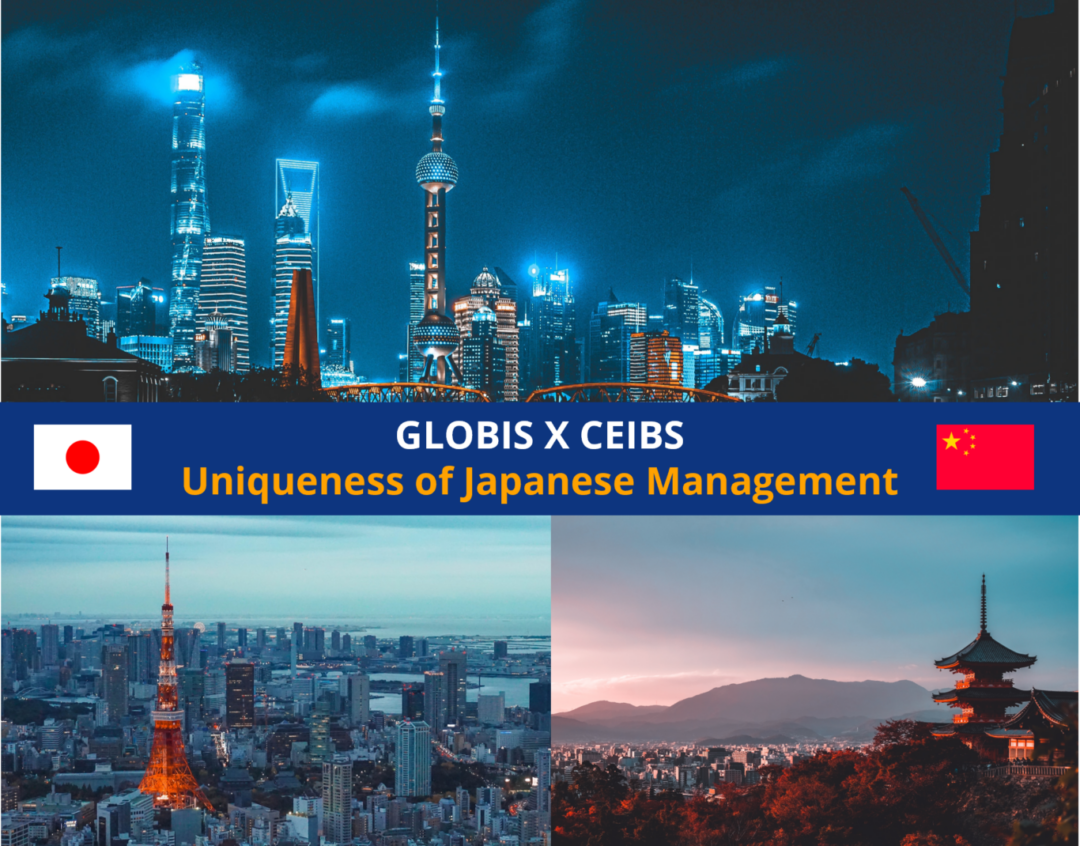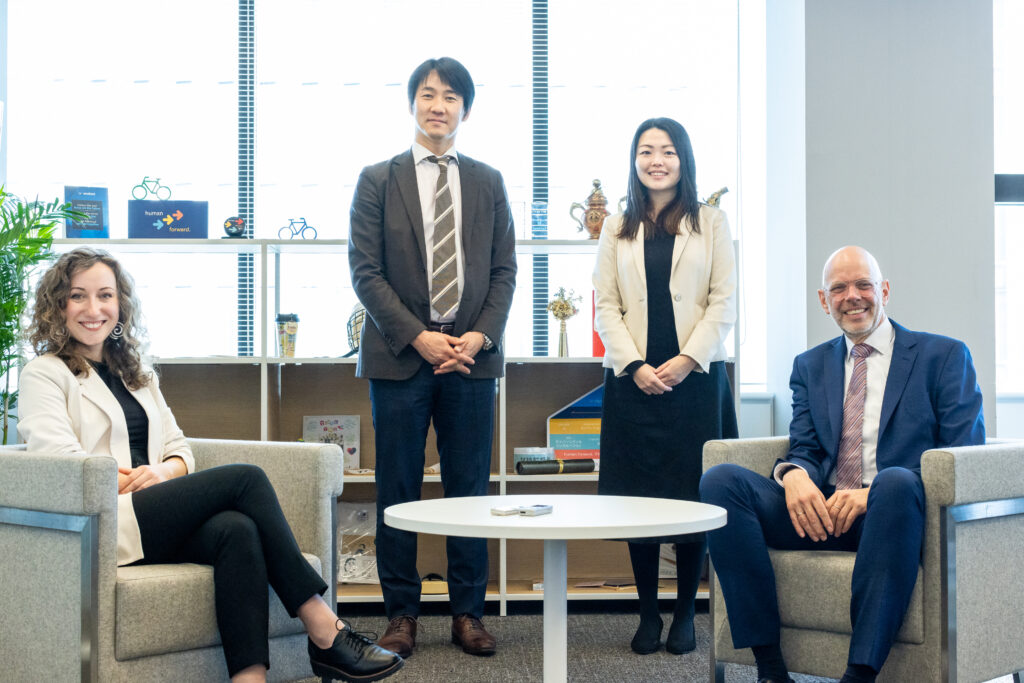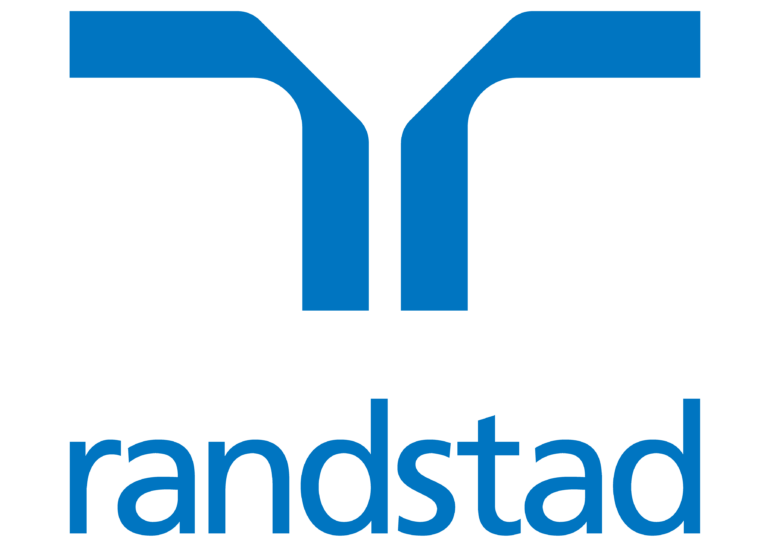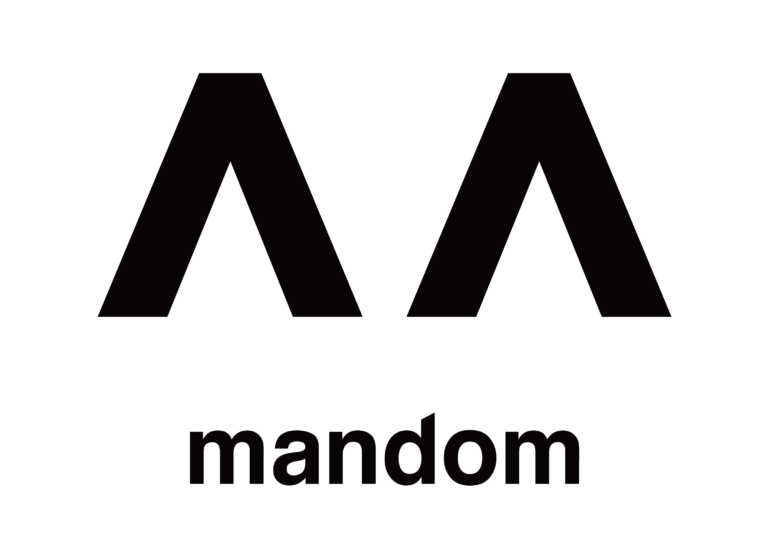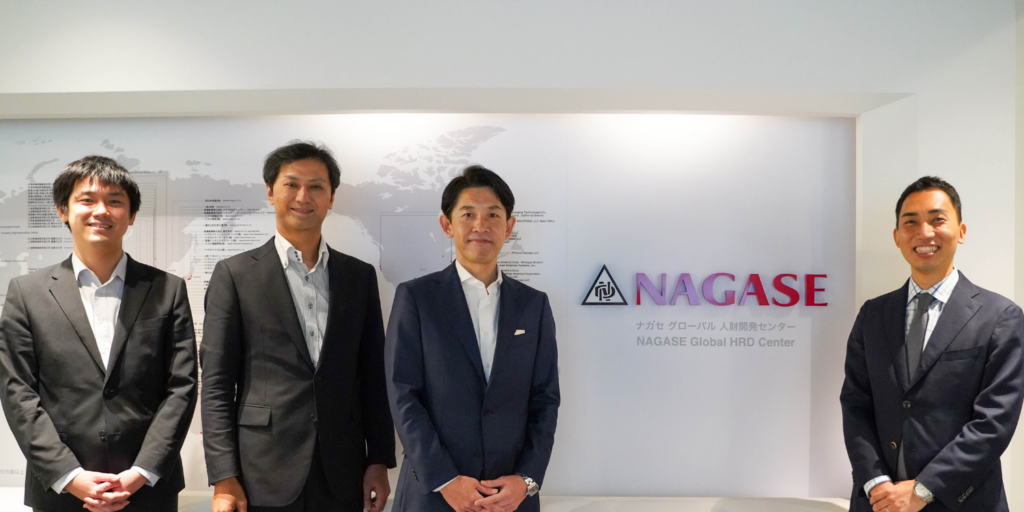Mitsubishi Electric Corporation

Talent Management and Overseas Leader Development: Nurturing Leaders with the “Mitsubishi Electric Identity”

We interviewed Mr. Daisuke Nagayasu, Manager, International Human Resources Section, Corporate Human Resources Division, of the Mitsubishi Electric Corporation, about the company’s talent management and overseas business leader development policies.
Note:
*Department and position are as of the time of the interview in 2019
1. Background and Challenges
Nakashima: Can you start by telling us about the background of your company’s development of talent management on a global scale?
Mr. Nagayasu: Yes, because the Japanese domestic market is expected to grow slowly in the future, we must compete in overseas markets to achieve quality growth. However, there is a limit to exporting human resources from Japan as we have done in the past. The amount of talent in Japan is decreasing, and we’re trying to determine if we can acquire quality people for the long run. Therefore, we had to think of new ways to make the most of local human resources. We’d been working on various initiatives, but it wasn’t until 2016 that we began to move forward earnestly as an organization. That’s when I returned to Japan from my overseas assignment.
Even if we talk about talent management globally, the concept differs from company to company. This is because different companies have different business and commercial strengths.We have 10 business units, each with different commercial strengths. Accordingly, we started discussions on the following topics, including what not to do.
We looked at the strengths found in our technology, location, people, distribution channels, and collaboration with other companies. We asked ourselves what is a good form of global talent management for Mitsubishi Electric as a whole?
We knew we were a company with solid business divisions. The tactic for promoting global talent management across the company was to start with where we could do it first. So, we did not promote it equally in all business divisions. Instead, we began with model cases where we could get a relatively good understanding of the initiative.
Nakashima: Can you tell us a little more about your business division? In terms of ease of implementation, at other companies, we have heard that if the company has a long history of overseas expansion, there is a certain degree of resistance, and it is difficult for the head office personnel to get involved. What was this true for your company?
Mr. Nagayasu: Each business has a different path with overseas expansion. Our first overseas expansion was in the home appliance division, where we began manufacturing fans, televisions, and other products at our overseas factories. As a result, our overseas bases for home appliances have a relatively long history, which created a stagnant pool of human resources.
In other cases, such as our elevator and escalator business divisions, they are often headed by local talent. We determine the appropriate method of involvement by combining various measures, including human resources and capital policy.
Nakashima: You mentioned that you would proceed from where you can gain understanding. Do you plan to expand the scope of this initiative in one fell swoop?
Mr. Nagayasu: The important thing is to maintain sight of the objective of strengthening the business. Localization of management itself should not become an objective. If we fail to see this, the means will become the end. Global talent management is ultimately about the optimal allocation of people. Having a local person at the top is not a simple matter. Depending on the characteristics of the business, it may be more appropriate to assign an expatriate.
Nakashima: Talent management covers various scopes such as recruitment, development/training, evaluation, and assignment. The scope and complexity must be large since it’s on a global level. What steps and priorities are being taken to address this?
Mr. Nagayasu: The first thing we did was to get clarity on what kind of people we had overseas.
We proceeded to investigate the local CEOs and the people in the hierarchy below them to the extent that it would not be too much trouble for each business unit. Compared to other companies, I feel that our overseas offices have a greater deal of autonomy in management and the extent to which they are entrusted. But we must not simply leave things to them. After specifying the scope of what we wanted to know as the head office, we decided first to find out who was there.
Nakashima: How did you gather information on human resources overseas?
Mr. Nagayasu: At first, we used Microsoft Excel. We simply needed to know what kind of people we had. It was not a big deal to maintain a database of all human resources around the world.
That Excel file contained information such as who is in this position, what is their demographic information, and who are the potential successors to the position. Not all information we wanted was included, and sometimes the answers came back blank. However, if the local side took this seriously, they filled it out completely.
After collecting information by Excel was established, we gradually replaced it with a system. I believe tasks like these should not require excessive physical exertion or labour. It’s better to start small and gradually develop an automated system.
Nakashima: I think it is still difficult to obtain information on local human resources without face-to-face communication. How did you do it successfully?
Mr. Nagayasu: Since I was in Asia, I had a network that matches the names and faces of HR managers across all our regional offices. However, since I was unfamiliar with the U.S., I asked someone with local knowledge to assist me. We divided the workload among individuals who had established networks in each respective region.
Nakashima: Out of all the different elements you have in place, like development, training, evaluation, and placement, how did you choose to begin developing them? Did you prioritize any particular aspect?
Mr. Nagayasu: We started with training first. Again, our stance is not to proceed with everything at once but from where we can. While there are different ways that the business and human resource departments can collaborate, I think that many companies view talent management as something to accept in principle but not fully embrace in practice.
Talent management involves a variety of steps. Selection, evaluation, training, assignment, and selecting promising personnel. In some cases, the HR department at the head office may face opposition if they attempt to intervene in the personnel assignments and evaluations of business units, but attending training can help them integrate smoothly. They don’t have to send their people to the training if they don’t like it. As a result, “starting with training” made strategic sense for our company’s global talent management.
Nakashima: In addition to training, it is imperative to rotate personnel across various functions and regions in order to foster the development of the next generation of personnel. There may be barriers that arise there. How do you plan to address this challenge?
Mr. Nagayasu: That is an issue for the future. Transferring personnel within the same business unit to different countries is not a challenge if the person agrees. However, if it involves personnel affairs beyond business units, we need to determine who has the authority and function to handle it. A coordination function will also be necessary. Before proceeding, we should establish a comprehensive policy on personnel transfers.
Nakashima: What is your ultimate goal beyond the advancement of talent management?
Mr. Nagayasu: Our goal is to ensure that local individuals are considered for management positions at our head office. Currently, Japanese candidates are primarily selected for these roles.
At the same time, we also need to assess whether suitable human resources are being developed.
2. Development & Training: Mitsubishi Electric Global Executive Program (MGEP)
Nakashima: In 2017, the Mitsubishi Electric Global Executive Program (MGEP) was launched to develop the leadership for overseas bases. To begin with, what issues are you aware of regarding the organization and human resources at your overseas bases?
Mr. Nagayasu: The challenges differ for each location. In places where many Japanese expatriates have been in charge, it’s necessary for the local people to take ownership. Instead of relying solely on the Japanese to make decisions and take risks, we would like locals to participate with authority and responsibility.
One problem is that some managers at international bases may not have a complete understanding of Mitsubishi Electric. For example, they may only be aware of their specific branch and not the entirety of the company. Also, in the past, there was a case where some employees mistakenly believed that Mitsubishi Electric only produced electrical components for vehicles, despite the company’s broader product range.
Therefore, the Global Management Workshop (GMW) is a program designed for selected managers at Mitsubishi Electric’s overseas bases. It provides participants with an opportunity to visit the head office and gain a comprehensive understanding of Mitsubishi Electric as a whole. The aim is to emphasize that they are members of the Mitsubishi Electric Group. The program is particularly beneficial for managers in higher management positions as they will be responsible for promoting collaboration with other business divisions in the future. It is essential for them to have a broad knowledge of fields that they are not currently involved in.
Nakashima: What difficulties did you face in preparing for and launching the program?
Mr. Nagayasu: Fortunately, I was blessed with a strong organization and good people. There were people not only in Japan, but also overseas who helped us in various ways. We shared the importance of training overseas directors, so there was no choice not to do it.
We first established the general program content and then started recruiting participants before finalizing the details. We understood that the training content needed to be tailored to suit the participants’ needs.
When I conduct training for a specific group, I often worry about two things: Will we meet the minimum number of participants, and will the right people attend? Despite my concerns, the HR representatives from each business division worked closely with the local subsidiaries to ensure a well-rounded group of attendees from each region, including those scheduled for promotion to local top management. Thanks to their efforts, my worries were put to rest.
The program was designed and modified with flexibility while taking into account the opinions of each business unit. Our training office’s basic concept was maintained, and thanks to the involvement of talented individuals, the first MGEP was of exceptional quality.
Nakashima: Tell me about the ideas that you and other international HR people have injected into MGEP?
Mr. Nagayasu: Our goal was to express our enthusiasm and show the importance of our company’s expectations for participants. To achieve this, we involved top management in training and even had the president and general manager of the international business division attend on the last day. This helped motivate participants and served as a complement to the training itself.
Additionally, the training included assessments and gave participants the opportunity to showcase themselves to the management team. This allowed the management team to see a side of the participants that is not usually shown in regular meetings.
It is important for us to involve the management team in the training sessions. When the management team is impressed by the participants’ discussions and thoughts, it makes it easier for us to implement new measures.
This is why we chose GLOBIS as our partner, as they are known for conveying enthusiasm during their training sessions. We have previously worked with GLOBIS in Bangkok and Singapore and have seen firsthand the effectiveness of their enthusiastic lecturers.
Creating a “leader of Mitsubishi Electric” was deemed crucial. However, it is challenging to entrust the management of our business sites to a president recruited through headhunting from outside our organization. Each subsidiary has its unique site, culture, and climate, and our employees are locally hired and have a long-standing relationship with us.
It raises the question of whether someone outside can manage the sites appropriately, including making day-to-day decisions. In such a complex situation, can they make decisions that align with Mitsubishi Electric’s values? Therefore, we needed a leader who understands the company’s character and was committed to working within the group. To guide us in designing the MGEP, we developed the keywords “axis” and “type” during our discussions with GLOBIS.
Nakashima: This is only the third year since MGEP started. How would you sum up the significance of MGEP for the participants?
Mr. Nagayasu: It allows people in similar positions to enhance each other’s skills beyond their business and country. During meetings in Japan to discuss business plans and other matters, we reunite to discuss recent developments.
Additionally, our network with the head office HR has helped lower their psychological barriers with the head office. They feel comfortable consulting with HR at the headquarters whenever they encounter any issues. Occasionally, when a few of them visit the head office, they organize an MGEP reunion, and we all go out for a drink.
There are individuals who have gained a greater understanding of the business and organization. The MGEP program aims to improve individuals’ mindsets, focusing on verbalizing and stimulating their motivation and drive.
While participants don’t always acknowledge their own progress, we are delighted to receive feedback from others who may notice significant changes in them. As an example, people who have dedicated a significant portion of their careers to business and reached high-level executive positions often prioritize business matters. However, participating in this program can expand their understanding of human resource development and increase awareness of management issues, like the company’s compliance system. Additionally, hearing expressions of gratitude from those around them may lead to consideration for future opportunities.
3. Experience Reflection & Thoughts for the Future
Nakashima: In what ways have you found your experience with overseas assignments to be useful?
Mr. Nagayasu: My experience of overseas assignments has been very useful. During my time stationed in Bangkok and Singapore, I had a different perspective compared to my experience at the head office. I am grateful for the chance to implement the ideas I had back then at the head office now.
For example, local HR managers have frequently expressed difficulty in understanding the specific image of our corporate philosophy, saying that the wording is too general. They have requested a method of proper education to establish a better understanding of our philosophy. Individuals who have resided in Japan for a long time may have the chance to learn about the philosophy through anecdotes shared during social gatherings, such as drinking parties, where they can hear about the experiences and stories of their elder peers. Just like reading picture books to children to help them learn life philosophies, storytelling is an effective way to convey thoughts and feelings.
Upon my return to Japan, I was involved in the production of a 30-minute video that aimed to explain our corporate philosophy to people overseas. The video utilized real-life examples and narratives to convey our values effectively. Also, I contributed to the creation of training materials that would help disseminate our corporate philosophy worldwide.
When it comes to talent management, it’s essential to establish a strong concept at the main office and apply it globally while also finding ways to connect with the talent pool in Japan. During my time in Singapore, I participated in numerous discussions on this topic. This experience allowed me to contribute my own ideas to the ongoing conversation at the head office upon returning to Japan.
Nakashima: How has your experience overseas been utilized in the launch of MGEP?
Mr. Nagayasu: I was also doing training in the region, but some training programs, such as leadership development, are not possible with just a small number of people at each site. At that time, when I gathered people from the whole region, I got people in the right positions from each base. We gradually began to see the faces of potential executive personnel at each base.
You can see so many new things when you have experienced the local culture in person. If you do not experience it firsthand, you will not know what is really needed in the area. However, as it has been over three years since my return to Japan, I cannot confidently say that I still “know the local area”. It remains a significant challenge for me to stay connected to the on-the-spot feeling and avoid becoming detached.
Nakashima: The more we hear about you, the more we realize that your experience has led you to where you are today. Could you go a little further and tell us about the origins of your work and what you are passionate about?
Mr. Nagayasu: Even though the work was tough, I look back on it later and think it was a good experience. This makes me happy. There was a time when we had to make a large-scale reassignment due to structural reforms at a factory where I worked. It was a very difficult position to be in as a personnel officer, but even in the midst of such a difficult job, somewhere in my heart, I still had some kind of pride.
My supervisor at that time always made me think about the bigger picture, such as how to perceive “people”, the object of my job in HR, and how to come to terms with this reassignment. Whenever he thought it was not in the best interest of the company, he would go to management and talk it through. I believe such supervisors are exceptional.
A company is not only responsible for its employees but also for the lives of its employees’ families. They may have children or parents who need care. Even if the final decision is tough, HR should consider this in the process of reaching a decision. It may be old-fashioned, but I think this may be the DNA of Mitsubishi Electric’s human resources.
Nakashima: What aspirations do you have for the future of Mitsubishi Electric? What kind of organization and human resources do you hope to pursue?
Mr. Nagayasu: I believe that the organization and human resources will differ depending on the cultural background of each overseas office and region. The desired leader should be different depending on the region. In Thailand, where I was posted, I think they are looking for a leader who is always smiling and cheerful but sometimes strict, like the “Thai people’s idea of an ideal father.” This was completely different in Singapore. I think it is even more so in the U.S. and Europe.
The ideal state of the organisation and human resources is something that should swing from region to region. If I were to talk about the ideal of Mitsubishi Electric’s human resources in general, I would say that each region should be able to provide employment. Be able to support their families. Through our business, we should be able to contribute to the development of local society. I would be very happy if we could achieve these goals. Global is ultimately a collection of local communities, and I believe that this means living in and being needed by the local society.
If someone gave me the opportunity to choose any job, I would want to work as a domestic factory personnel. It’s been almost a decade since I last worked in a domestic factory, and I would like to reconnect with my roots. Even though I may continue to work overseas in the future, I believe it’s essential to remember where I started. This will allow me to genuinely communicate the values of Mitsubishi Electric.
Nakashima: Lastly, can you provide us with a message to share with those working towards developing leaders in overseas offices of other companies?
Mr. Nagayasu: First of all, I think it is important not to dwell on the objective. What is the purpose of leadership development? This must be agreed upon with the business divisions. Leader development itself should never become the objective.
Tactically, I think it is important to involve your own bosses. Some bosses may have never been abroad, so the first step is to get them to visit and think that overseas is a good place. Then, little by little, we can get their ear to the ground on local issues. In fact, there are many things you can’t understand until you actually visit the place, so I think it’s important for them to go there and feel it.
When your boss is ready to do so, you can ask them to understand the overarching plan, while you handle the specifics. As you progress, it would be beneficial to communicate your ideas with both the local HR team and the business unit HR staff, while gradually increasing your supporters. Personally, I was fortunate enough to inherit a wealth of knowledge from my predecessors, which I was able to effectively utilize.
